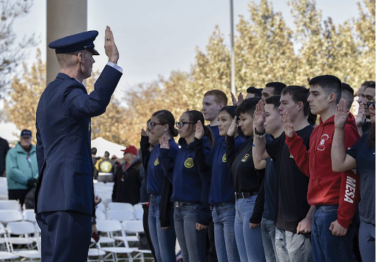Image provided by Google.
Recently, the withdrawal of US troops from Afghanistan, tensions with Russia and China, and North Korea’s latest missile test have dominated our news. Because of these issues, some voices and politicians have been advocating for a return to the draft. Recently, the military has faced a growing problem: fewer high school and college graduates are considering enlistment. Compared to the spike seen immediately after 9/11, less than 1% of high school students are currently military-bound. The gap has grown year after year.
However, we may soon find ourselves relying less on soldiers and more on drones. The U.S. military has carried out thousands of unmanned missions under the overviews of three administrations and now, under President Biden, a fourth. And, despite claims that they target civilians, alienate governments, or set dangerous precedents, there’s a reason why commanders-in-chief from Bush to Biden have chosen time and again to use them in conflict: they work. And they’ve done so at little cost, no risk to US forces, and with far fewer casualties than alternative methods would’ve caused. The reason that drones reliably sustain fewer civilian casualties is simple.
They can follow a target for long periods of time, ensuring high degrees of certainty that illegal activities are occurring, and that civilians aren’t around if an attack is necessary. Spotting a drone 20,000 feet in the air is much harder than spotting a group of soldiers 200 feet away. Incidents have shown how suicide bombers often choose to detonate prematurely when confronted with US soldiers, posing a serious threat to innocent bystanders. Statistics from the past two decades also highlight the risk of using ground soldiers or other weapons. For example, in Baghdad, in which US hired military contractors opened fire on civilians, killing 20 people in 2006. Drones are also less intrusive when compared to previous US tactics.
When you think about it, an unwanted intrusion is often the cause of discontent and violence towards a nation. America’s invasion of Afghanistan, while justified, had the side effect of alienating many Afghan citizens. Anger and discontent form when visible reminders of foreign occupation occur daily. Furthermore, this leads to an environment where terrorist propaganda turns foreign nationals against the US.

Image provided by Google.
Even if they worked while the U.S. was in Afghanistan, it’s too much to hope that boots-on-the-ground tactics can solve all future conflicts. In countries where the US has support from the host country, by all means, we should rely on soldiers rather than on drones. Yet too often, the US isn’t in these situations. Yemen, Iran, or Iraq are all hotspots of turmoil or governmental corruption; a meeting with top politicians can either result in the capture of an important figure, or result in America’s finest kicking in the doors to a building wired to blow sky high.
Especially now, with America’s withdrawal from Afghanistan, it’s more imperative than ever that the US can extend its influence beyond its borders and prevent terrorism. With decreasing interest in joining the military, and drones providing safe support, there’s no reason why we must continuously expect our country’s citizens to shoulder the burden. If we cannot expect soldiers to maintain a vigil, relegating the duty to drones is the logical next step.
Conley Shen is 15 years old, and a junior at Washington High School. He was born and raised in Fremont, where he has lived all his life. This is his first year being a part of the school newspaper, and has interest in covering a variety of subjects. He is a current member of the Washington debate club, and some of his hobbies include looking for, and finding new novel series to enjoy. After high school, he hopes to enter college before graduating and entering the workforce.

